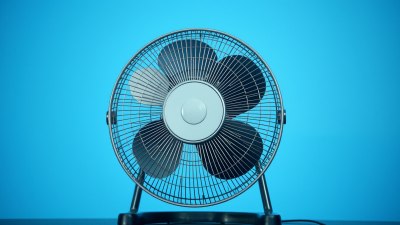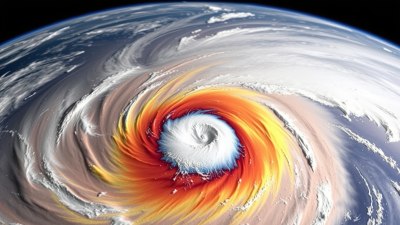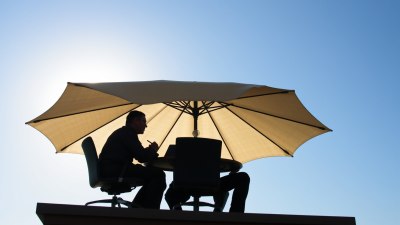The Hidden Meteorology Behind Every “Treat Yourself” Purchase
Discover the unexpected link between weather patterns and consumer spending habits in this insightful article.

In our daily lives, the concept of 'treating yourself' has become a ubiquitous phrase, often used to justify spending on luxury items or indulgent experiences. However, few consider the underlying meteorological phenomena that influence this behavior. This article delves into how weather patterns can impact consumer spending, drive emotional responses, and alter our purchasing decisions.
The Psychology of Treating Yourself
When we speak of 'treating ourselves,' we often reference a psychology rooted in self-care and reward systems. Various studies have illustrated that individuals often turn to retail therapy during times of emotional stress or discomfort. This psychological mechanism can be influenced by external factors, and one of the most significant is weather. Whether it’s a gloomy rainy day or a sunny afternoon, the weather can dramatically affect our mood and, consequently, our spending habits.
Weather and Mood: A Direct Correlation
Research indicates a significant correlation between weather conditions and emotional well-being. Sunny weather tends to enhance feelings of happiness, while gloomy, rainy days can lead to feelings of sadness or despondency. This is commonly referred to as Seasonal Affective Disorder (SAD), where individuals experience depressive symptoms during winter months due to reduced sunlight. When individuals feel happier and more uplifted, they are more inclined to spend money. This connection is especially evident in warmer months when people are more easily tempted to splurge on treats since the lifestyle associated with friendly weather often includes outdoor dining, shopping excursions, and vacations.
The Seasons of Spending
Consumer behaviors often fluctuate with the seasons, influenced heavily by the weather. Spring and summer typically inspire an uptick in purchasing as consumers engage in more outdoor activities and social gatherings. Retailers often take advantage of this trend by releasing seasonal promotions and marketing campaigns. However, as the days grow shorter and colder in fall and winter, a shift in spending can be observed. Businesses that adapt to these seasonal changes can tap into the emotional landscape of their clientele, offering 'treat yourself' purchases that align with particular weather conditions.
Rainy Days and Online Shopping
Interestingly, studies reflecting purchases made on rainy days show an intriguing trend: consumers are more likely to engage in online shopping. When driven indoors by bad weather, individuals seek comfort in impulse buys as a way to self-soothe their moods. Retailers often see fluctuations in online sales corresponding with rainy weather patterns, as consumers may indulge in 'treat yourself' purchases without the distractions of outside activities. The convenience of online shopping during such weather can create a perfect storm for increased sales.
The Influence of Temperature on Retail Therapy
Just as rain can induce a desire to shop online, so can high temperatures exacerbate spending behavior. Extreme heat can lead to the pursuit of cooling treats, such as ice cream or chilled beverages. Conversely, cold temperatures often evoke the desire for cozy indulgences, leading to purchases that promote comfort, like warm blankets or hot chocolate. Both scenarios reflect how temperature can nudge consumers towards indulgent purchases to both enhance their experience of the weather and manage their mood.
The impact of weather on consumer spending transcends individual habits and shapes broader economic patterns. Certain cities experience their highest sales during specific weather events. For example, when a major storm approaches, many people stockpile necessities, elevating sales for grocery stores and other retailers providing essentials. Similarly, local businesses may thrive after a positive change in weather, such as a sunny weekend. These shifts affect not just individual spending but also have deeper implications for economic forecasts and retail strategies.
How Retailers Leverage Weather Trends
Understanding the connection between weather and spending motivations has led to innovative marketing strategies among retailers. Many companies rely on data analytics to predict purchasing trends based on weather forecasts. For example, companies might increase online advertisements for cooking products before a big snowstorm, anticipating consumers will treat themselves to warming comfort foods. Seasonal marketing strategies capitalize on these modifications, creating campaigns that play up the emotional aspects tied to weather patterns.
Marketing Techniques and Emotional Triggers
Retailers often employ various marketing techniques to harness the emotional triggers linked to weather. During sunny days, advertisements may feature leisure and enjoyment, promoting experiences that align with outdoor fun. Conversely, ads might pivot during inclement weather to offer comforting and soothing products. By appealing not just to customers' needs but also their emotions, retailers can effectively align their offerings with the psychological responses driven by weather influences.
The Future of Weather-Influenced Purchasing
As we continue into an era increasingly governed by rapid shifts in climate, understanding weather's impact on consumer psychology and spending will become ever more vital. The rise of big data and machine learning provides retailers with more precise tools to predict and respond to these shifts effectively. As weather patterns evolve, we can expect to see sophisticated marketing strategies that will personalize 'treat yourself' campaigns down to minute local weather forecasts.
The Storm Within
Ultimately, the hidden meteorology of 'treat yourself' behavior highlights the intricate interplay between our emotional states and external conditions. Everything from a sunny day to a gloomy storm can shape our desires, often leading us to indulge in purchases that bring comfort, joy, or temporary relief. By recognizing these patterns, consumers can make more mindful choices about their spending, and concurrently, retailers can strategize more effectively to align their offerings with prevailing weather influences. Understanding this hidden meteorology is crucial, not just for economic strategies, but for understanding ourselves in the ever-changing landscape of consumerism and emotional well-being.











